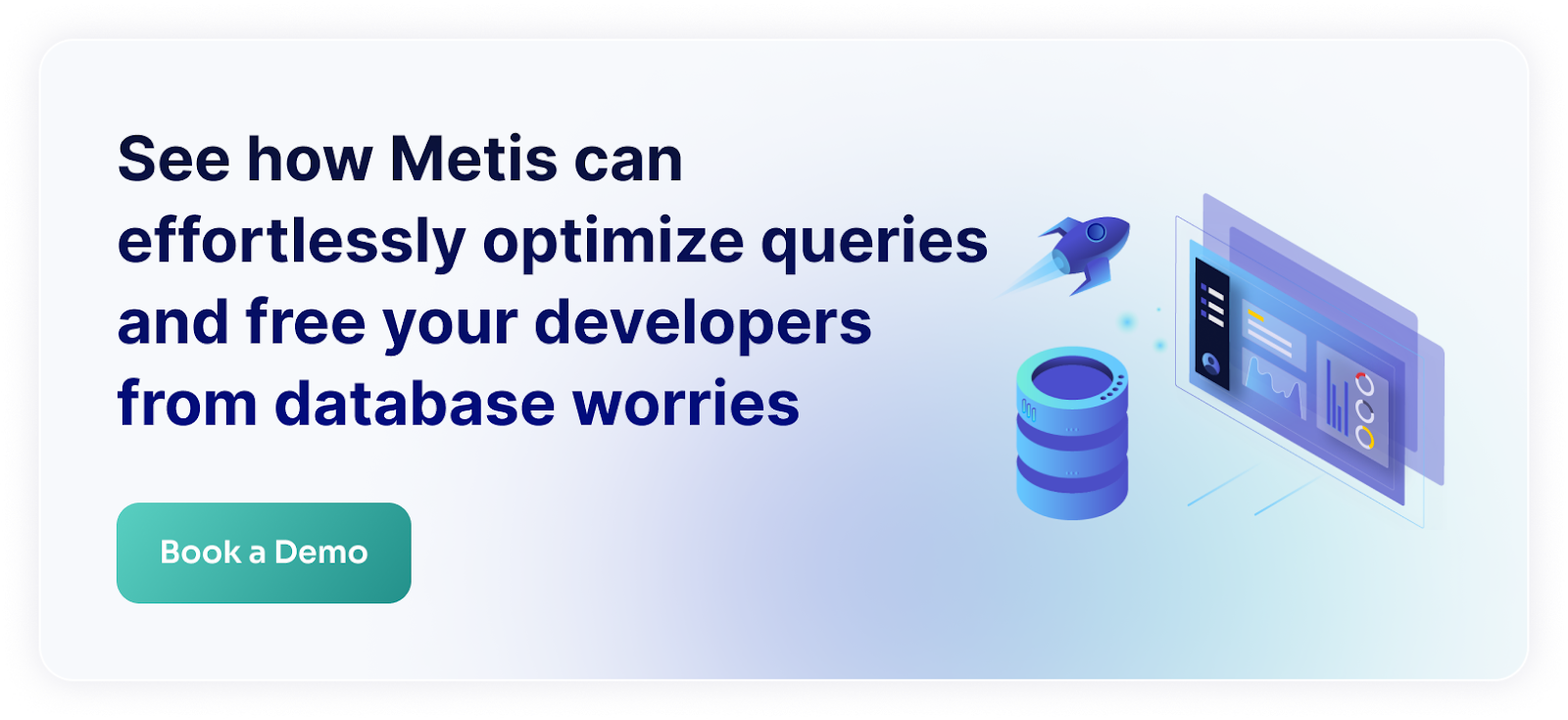Ensuring database reliability can be difficult. Our goal is to speed up development and minimize rollbacks. We want developers to be able to work efficiently while taking ownership of their databases. Achieving this becomes much simpler when robust database observability is in place. Let’s explore how.
Do Not Wait With Checks
Teams aim to maintain continuous database reliability, focusing on ensuring their designs perform well in production, scale effectively, and allow for safe code deployments. To achieve this level of quality, they rely on a range of practices, including thorough testing, code reviews, automated CI/CD pipelines, and component monitoring.
Despite these efforts, challenges persist. Database-related problems often go undetected during testing. This is because most tests prioritize the accuracy of data operations while overlooking performance considerations. As a result, even though the data may be handled correctly, the solution may perform too slowly for production needs, leading to failures and decreased customer satisfaction.
Load testing adds further complications. These tests are complex to create and maintain, expensive to run, and usually occur too late in development. By the time load testing uncovers performance issues, the code has already been reviewed and merged, requiring developers to revisit and revise their designs to address the problems.
A straightforward solution exists for addressing these challenges: implementing observability early in the pipeline. Utilizing effective observability tools, we can integrate directly with developers' environments to detect errors during the development phase. This allows us to monitor query performance, identify schema issues, and recognize design flaws—essentially catching anything that might cause problems in production. Addressing these issues early enables us to fix them at the source before they become larger concerns.
Let Your Teams Shine
Maintaining database reliability can be challenging for developers when they don't have full ownership of the process. It becomes even more difficult when multiple teams are involved, DBAs guard their responsibilities, and ticketing issues create bottlenecks. However, this can be resolved.
Developers can significantly increase their speed and effectiveness when they have complete ownership. They excel when they control development, deployment, monitoring, and troubleshooting. To succeed, they need the right tools—observability solutions that offer actionable insights and automated troubleshooting, rather than traditional monitoring tools that simply deliver raw data without context or understanding.
We need a new approach. Instead of overwhelming developers with countless data points, we need solutions that analyze the entire SDLC and provide actionable insights with automated fixes. These tools should be able to optimize queries and offer suggestions to improve performance. Likewise, they should recommend schema enhancements, and indexes, and detect anomalies, automatically alerting developers when manual intervention is required for business-critical decisions that can't be resolved automatically.
A paradigm shift is necessary as we move away from information overload towards more streamlined solutions that encapsulate the entire Software Development Life Cycle (SDLC). Our needs are twofold: firstly, a solution should autonomously scrutinize and analyze all aspects of our SDLC to provide concise answers. This includes optimizing SQL queries for better performance or identifying areas requiring schema enhancements like adding appropriate indexes based on certain parameters such as query patterns - essentially providing automated fixes when possible. Secondly, it needs the capability not only to detect discrepancies that require developer intervention but also to have an alert system in place for these complex issues which cannot be resolved by code changes alone and instead necessitate business decisions or architectural modifications. In essence, we are seeking a holistic solution with automated capabilities where possible; otherwise, it provides the necessary prompts to guide developers toward appropriate actions that ensure the robustness of our system across all deployment stages without overwhelming them with data points.
Stop Being Afraid of Databases
Modern observability elevates your team's database reliability by ensuring that developers' changes are safe for production, anomalies are detected early, and configurations are optimized for maximum performance. With effective observability tools in place, project management becomes smoother as developers can bypass time-consuming interactions with other teams. This allows you to focus on your core business, boost productivity, and scale your organization efficiently.
Embracing cutting-edge monitoring tools brings about a noticeable improvement in our team's database dependability by validating the safety of developers’ code modifications for production environments. These modern observability solutions provide real-time anomaly detection while also optimizing configurations to achieve peak performance levels, thereby facilitating efficient project management without needing constant cross-communication with other teams - a common bottleneck in many organizations. As we shift our focus entirely onto core business tasks and activities thanks to these tools' efficiency gains, productivity skyrockets leading us towards effective scaling of the organization as well.







